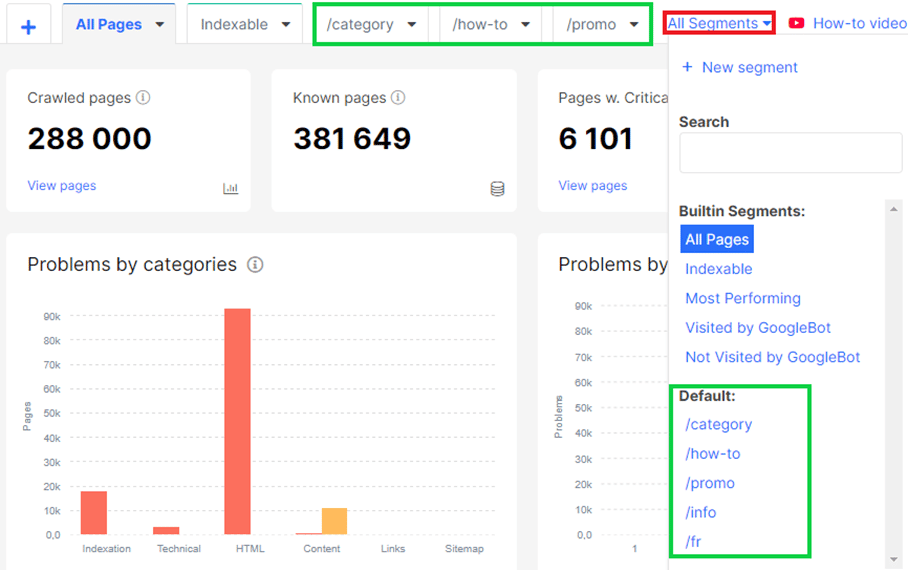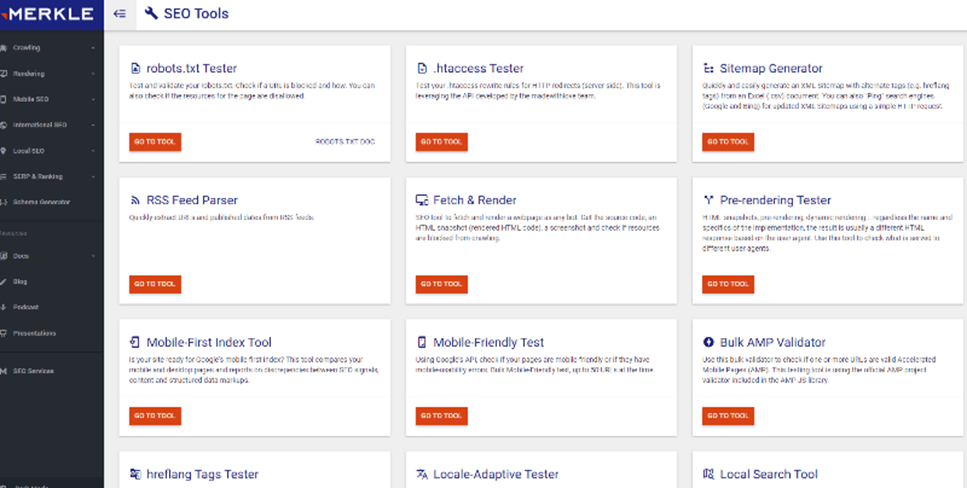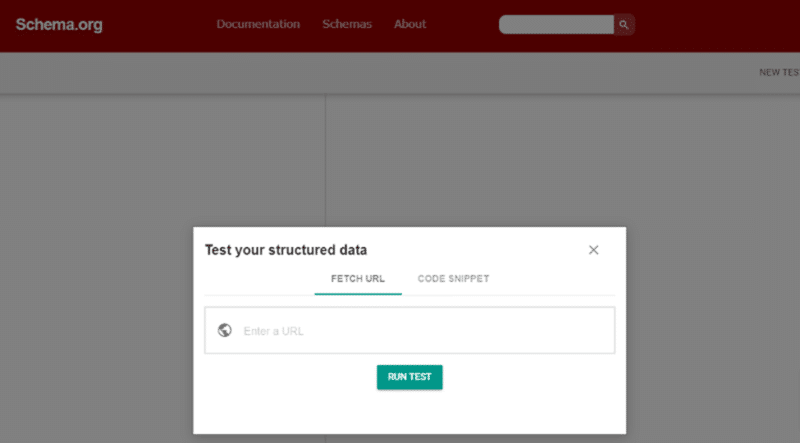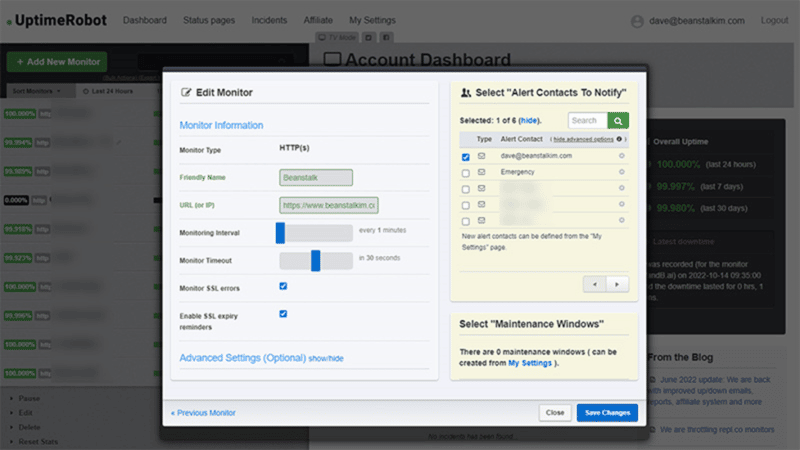SEO professionals can access many free and paid platforms, tools, and software. But if you and your competitors are all using the same tools, data, and approaches – how can you set yourself apart?
At SMX Next, I shared the SEO tools that will make up my toolkit in 2023. If you missed the session, read on as I share some highlights.
Before we dive in, it’s worth noting that true to the fast pace of SEO, there’s already been a change in how you might think of one of the tools – but we’ll get to that shortly.
So what will we be covering in this article?
- Why do we use SEO tools?
- The usual suspects.
- The unusual suspects.
- Fun with AI.
Let’s get started.
As with virtually every decision we make, when it comes to tools, it’s good to think about the ever-present question – why? Why do we use tools in the first place?
We generally use SEO tools for one of the following tasks:
- To automate monotonous tasks (e.g., rank checking).
- To distill large amounts of data into usable information (e.g., Google Analytics).
- To access information not functionally available to us otherwise (e.g., backlink analysis).
- To combine data sources and points (e.g., domain metrics on backlinks).
Essentially, we use tools to save time. When you think of most of the tools you use or want to use, they generally speed up the collection of information or present it in a way that’s easier to draw conclusions.
Take a moment and think of one of the tools you use and one of the tasks you use it for. Guaranteed it will fit one or more of the purposes above.
But, of course, there are hundreds of tools to choose from. I’m not going to pretend that the list below is fully exhaustive.
I’ve only included tools I use myself and only those that would apply to most people. That said, they’re tools that have proven themselves invaluable to my regular routine.
So what are they?
The usual suspects

You can probably guess what my list of usual suspects is now. But let’s cover them anyway.
Semrush
Why does Semrush make this list?
Semrush is a solid all-in-one toolset covering multiple areas of SEO, SEM and SMM and generally does them well.
Some of the key tools within the suite I use regularly are:
- Audit: There are definitely more sophisticated technical audit tools out there, but the Semrush tool runs regularly and gives you a quick-and-easy place to monitor for spikes and drops in errors, etc.
- Rank checking: Their rank-checking tool is excellent. You can select the location your rankings are checked from (or multiple) and monitor them daily. For those with large numbers of terms, they’re also presented in an easily digested and filterable way.
- Social poster: Semrush has a solid social monitoring and posting tool. You can keep track of your progress against competitors and monitor RSS feeds to quickly and easily get post ideas. It’s not as robust a social tool as some dedicated ones are, but it’s solid and good enough for many use cases.

You’re probably familiar with much of what it does and if not, I’d suggest a trial.
Semrush is generally pretty affordable for the variety of purposes it serves (though it can get pricey if you need to add users, white label reports, or use add-ons). And since it’s generally well known, knowing how to use it is a marketable skill.
Screaming Frog
Hands down, this is the best value tool on the market.

Screaming Frog, for the three of you who might not know, is a crawler.
Give it a website or a list of URLs and configure how you want it to crawl (depth, user agents, paths, etc.), info on the data you want to collect, plus a bit of time, and it’ll return an audit of the site with various visualizations and filters.
There’s a free version that’s good for up to 500 URLs, though it has limited customizations. For a paid version, you’ll have to pony up a “whopping” $210/year. As I said, best value tool on the market.
It’s good for:
- Customized crawling.
- Looking for specific text or HTML on pages.
- Easily export issues to send to devs.
- Creates XML sitemaps.
- Great visualizations.
And I don’t have to dive into the remainder of my usual suspects as you hopefully use them already:
All I’ll say about Bing Webmaster Tools is this:

It’s like Search Console, but with far more details and information, making it the unsung hero of SEO tools.
The unusual suspects

Technical SEO tools
Jet Octopus is another technical SEO suite. (And no, I don’t know where these companies get their names.)
The interface includes screens like:

It’s similar to Semrush but with different filtering options and of course, a different crawler. As you can see above, Jet Octopus lets you easily group issues into the sections of the site you’ll find them in, like a combination of Semrush and Bing Webmaster Tools.
I also find it gives me a different way of looking at a site structure, though I wouldn’t give up Semrush for it, making it one to add to the mix if you have the budget and need to make sure you have an easy-to-use different way of looking at things.
And some additional unusual suspects for technical SEO:
Merkle: Various free SEO tools covering everything from schema to prerendering.

Structured Data Testing Tool: For testing your schema.

Mobile Moxie: Free and paid tools for testing your mobile SEO.

Uptime Robot: For making sure your site(s) are up.

Content tools
But all the technical SEO in the world won’t get your ranking without great content. So let’s look at some unusual suspects on the content side:
A huge favorite content-related SEO tool of mine is the shockingly inexpensive Infranodus (though it arguably isn’t a content tool, it’s what I use it most for).
Within Infranodus, you’ll find an array of tools for a whopping €9/month (about the same in USD).

My most commonly used tools help me dig into the concepts included in the top Google results, and how the concepts connect to various pages within a list.
In short, you can enter a query and it will produce an interactive mapping of how the terms in the results connect to each other, which I find helps me not only better understand how Google might see a concept, but a user as well.
Here it is in action:
And of course:
- AlsoAsked: A good visualization of questions people as related to topics you’re researching.
- Answer The Public: A good visualization of how the questions related to a phrase group, by question intent.
Link-related tools
Of course, I have tools I use for keeping an eye on links and competitors’ links.
My favorite tools in this category are:
Ahrefs
While technically Ahrefs is a suite of tools one might compare to Semrush, it’s in links that I find it really shines.

I find it catches new backlinks faster than other tools, and generally has a more robust database.
So when I’m keeping my eye on new links, looking for gaps in link profiles, or just researching competitors, this is my first (though not only) stop.
Majestic
I haven’t used Majestic in a few years, but I wanted to include it in the list as it’s a solid backlink tool worth your consideration.

At one point, I hit a threshold and had too many tools, so I made a “one in, one out” policy to keep it under control.
I had a lot of duplication in the link category so I had to get rid of some tools. But for those who don’t have this problem, Majestic is a solid option to consider (and might even be worth revisiting myself).
Search Console
I hope I don’t have to tell you why Search Console is an important tool for monitoring your backlinks, but here it is summed up in a Stable Diffusion-generated image.

Get the daily newsletter search marketers rely on.
Of course, we can’t forget about AI. There are all sorts of AI-driven tools and I’m not going to tell you which is best as I haven’t tested them all and am far from deciding which one(s) I’ll land on yet (though Jasper has taken an early lead).
That said, you can access some of the core tech for free!
While there’s been a lot of hype around ChatGPT, I still prefer accessing the technology (GPT-3) in the OpenAI playground. It’s the same technology with (IMO) better flexibility and interface.
Simply sign up for an OpenAI account, and then you can access the API to perform all sorts of NLP-related tasks, or just play around in their playground.
It can be used for:
- Content outlines.
- Writing ecommerce data en masse.
- Powering chatbots (though there are many pre-boxed solutions for that as well).
- Translation.
- And so much more, including full content creation. (Use at your own risk!)
AI tools for image generation are also popular nowadays. I’ve used text-to-image generators for:
- Images for articles.
- Featured images.
- Digital ads.
- Social posts.
- Swag creation.
You can see some good examples of the power of image generators in my previous article, What the new wave of machine learning libraries means for SEO, marketing, which include:

The major tools you can use for text-to-image generators include:
- Craiyon (formerly DALL-E mini): Free and unlimited use.
- Stable Diffusion (via Dream Studio): 200 free generations, then $10/month for 1,000.
- DALL-E 2: 15 free generations, then $15 per block of 115.
I built a forecasting tool that you can run as a Google Colab.
It lets you connect with your Google Analytics (only Universal Analytics for now, as most people don’t have over a year of data in GA4, which is required for decent forecasting).
You can even choose a specific segment of your analytics (organic, for example) and forecast the next few months to give you something like:

It’s nice to be able to know in advance what things are going to look like in the future.
I wrote a full tutorial on how to use it (very easy) in a previous Search Engine Land article, Forecasting web traffic using Google Analytics and Facebook Prophet.
The above tools are not the only ones I use. (I have 39 in my bookmarks alone!) But these are the ones I’ve found to work for me over the years.
Of course, you may use different tools as your situation or budget may differ. What’s important is that you have tools for all the main tasks.
Below is the complete video of my SMX Next presentation.
Opinions expressed in this article are those of the guest author and not necessarily Search Engine Land. Staff authors are listed here.
New on Search Engine Land


